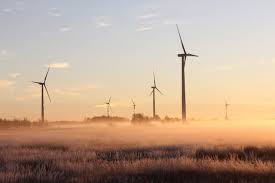Officials from the Public Service Commission in Wisconsin have approved the construction of the proposed Red Barn wind farm in southwestern Wisconsin. This is the state’s first project authorized under 12-year-old guidelines aimed to make the process easier for developers. The Red Barn wind farm is planned to have a capacity of slightly about 92 MW and be capable of providing enough power to power approximately 35,000 Wisconsin residences. The Red Barn Wind Farm, if granted by the Grant County board in 2019, will comprise up to 29 turbines scattered across more than 12,000 acres between Livingston, Montfort, and Fennimore.
Also Read: Construction of US$370 million Wisconsin Natural Gas facilities begins
Red Barn “offers another peek at the exciting future of energy generation in our state,” said forum executive director Scott Coenen, citing job creation, lease payments to landowners, and more than US$366,000 in yearly revenue for Grant County and the host communities. WPS will hold 90% of the project, with MGE controlling the remaining 10%. In order to protect customers from excessive risk, the utilities will not take custody of the project until it is completed and functioning, which is expected by the end of this year.
Both firms claim that because there would be no fuel expenditures, the wind farm will result in “substantial consumer savings” as compared to the continuous maintenance and operation of their existing generators. “Red Barn will be an economically appealing source of zero-fuel cost, zero-emission electricity that will save Wisconsin ratepayers money while reducing power plant emissions, including greenhouse gases, for years to come.” Wind development activities have suddenly ground to a standstill, according to Michael Vickerman, policy director for Renew Wisconsin.
However, in adjacent Minnesota, over 26,000 MW of new wind power was recently installed, and in Iowa, not far away, over 8,000 MW was added. “Developers just packed up and moved on to brighter pastures,” the policy director explained. “They didn’t have to travel very far.”
